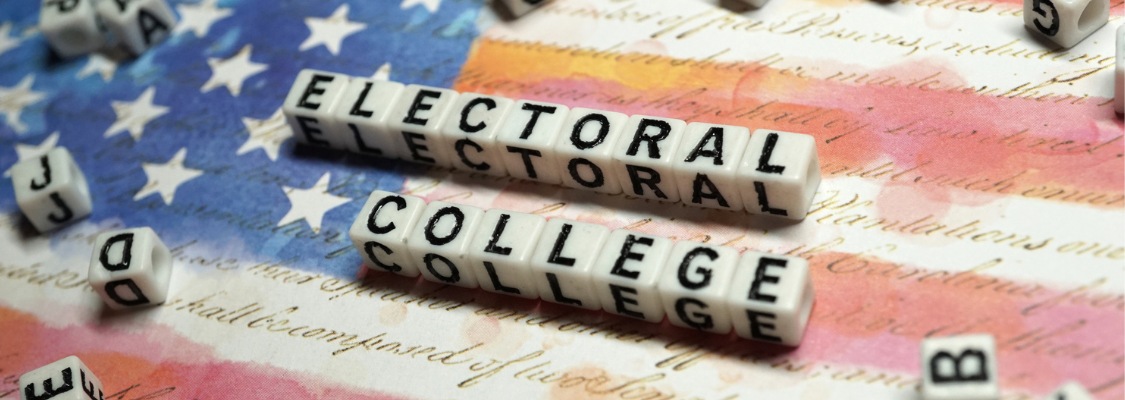Lesson 10: Election and Electoral College (Grades K-3)
Background Knowledge for Teachers:
In the beginning of the United States, the Founding Fathers didn’t want a direct election for the new president and vice president. At the time, many people lived in distant rural areas. News and other information took time to get to the people. Many people also didn’t have a formal education. The Framers of the Constitution felt that the voters would not know enough about the candidates to make wise decisions. They also considered how to make the elections fair for both large and small states. As a result, they decided to include something called the Electoral College in the Constitution.
The electors who serve in the Electoral College are chosen in the fall. Each political party chooses electors who pledge to vote for particular candidates according to the popular vote of each state. Most states require that all of their electors vote for the candidate who wins the majority vote in their state. However, two states, Maine and Nebraska, allocate their electoral votes according to the exact amount of popular votes that each candidate receives.
The national election for the U.S. president and vice president takes place every four years on the first Tuesday after the first Monday in November. In mid-December, following the election, the electors gather in their state capital and cast their electoral votes. The certified votes are sealed and sent to Congress.
On January 6, the electoral votes are officially opened and counted in a joint session of Congress. To win, a candidate must get at least 270 out of the 538 total electoral votes. If no candidate receives the required 270 votes, the House of Representatives chooses the president between the three candidates who received the most popular votes. Each state gets one vote, so the representatives for each state have to agree on which candidate will receive their vote. The House has had to vote for the president only twice, in 1801 and 1825.
Student Expectations:
- Students will be introduced to the Electoral College.
- Students will follow the vote count in the presidential election by coloring a map of the Electoral College.
Vocabulary and Definitions:
elector: someone who has the right to vote in an election
electoral college (U.S.): a body of people who represent the 50 states and formally cast votes for the presidential election
population: all of the inhabitants of a particular town, area, or country
Think Deeply:
If other classes in your school have participated in a mock election, find out the results of each class vote and add them together to see who won the school election. If other classes aren’t participating, visit other classes and take a poll of who the students would have voted for. Compare the school vote with the national vote. (Note: Complete this activity before the election is over.)
Lesson Plan:
- Using your mock election results, have the students compare their results with the results of the national popular vote.
- Explain that after the people vote, the states’ representatives, called electors, go to their state capitals and cast the final votes according to how the people in their states voted. Each state’s number of electoral votes depends on its population. States with more people get more votes.
- Project the blank electoral college map on your computer. Give each student a copy of the same map.
- Show students the results of the election online. Have the students color the states according to what candidate they voted for (red for the Republican candidate, blue for Democratic candidate), using red and blue markers or crayons. Provide guidance as necessary.
- Remind the students that even if there are more states in one color, the candidate represented by the opposite color can still win the election because some states have larger populations and therefore more votes.
Weekly Assessment:
First and Second Grade: Draw and label a picture of something about voting and/or elections that you have learned about.
Third Grade: Write a paragraph about why voting is an important responsibility.
